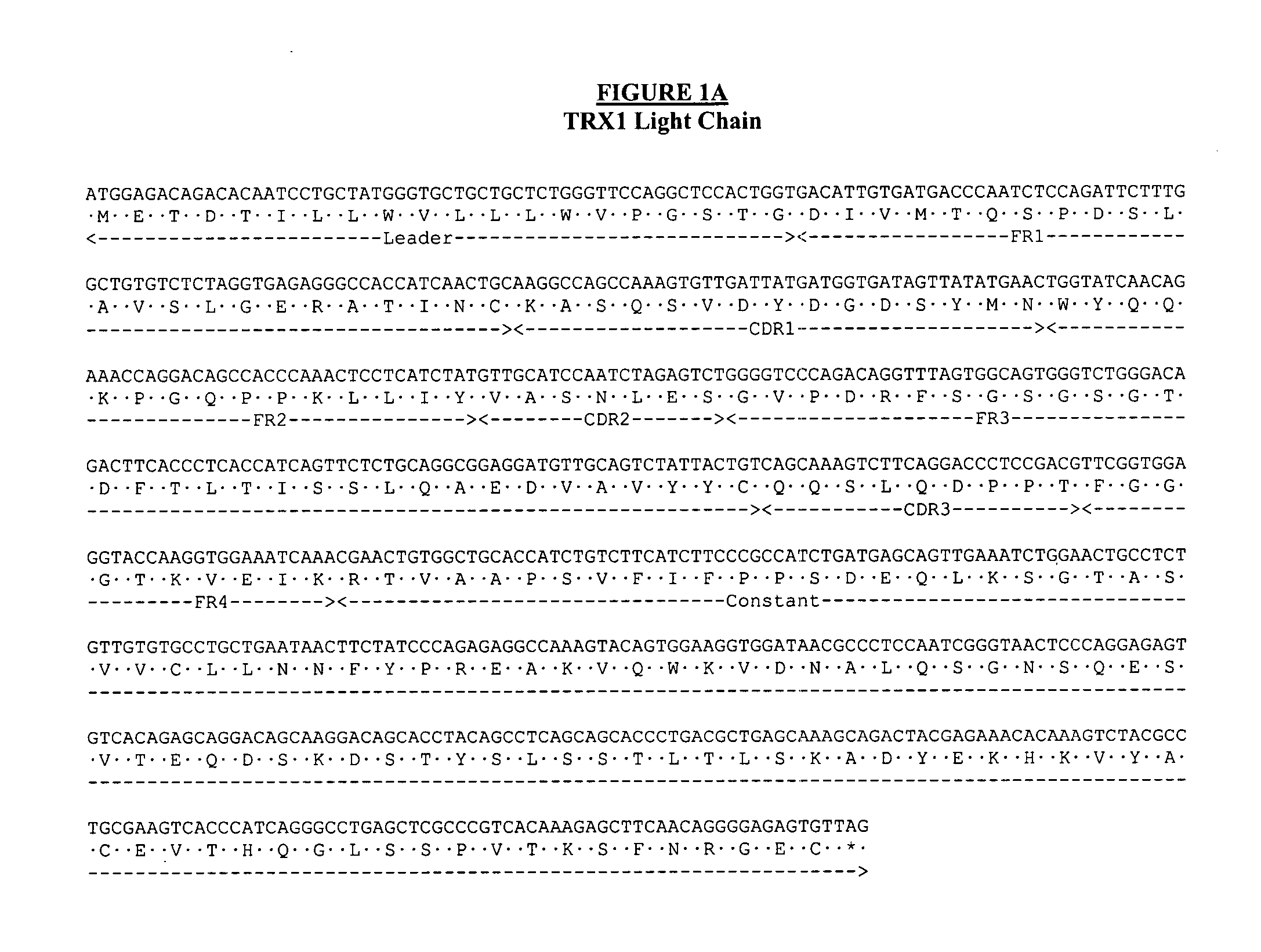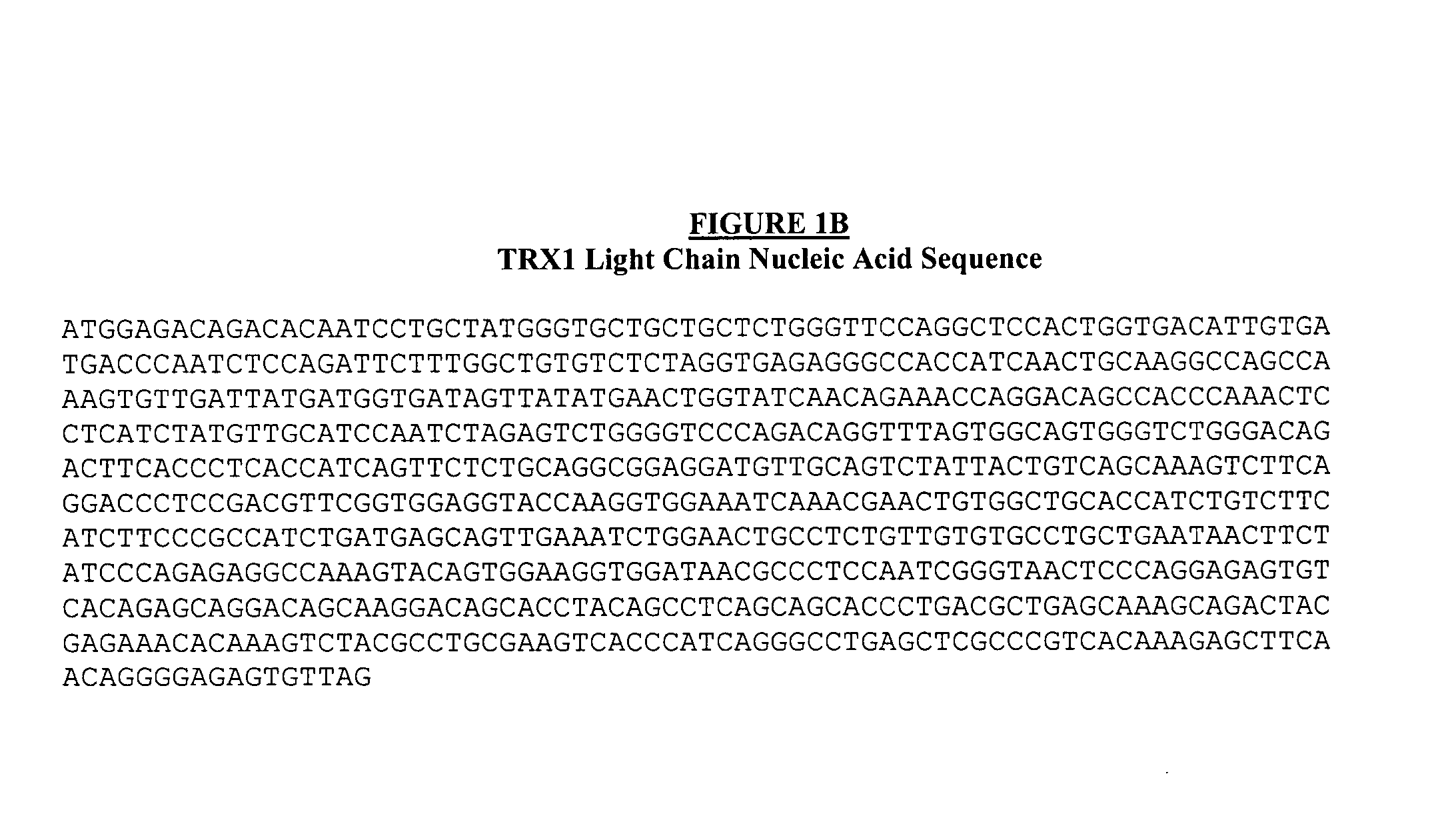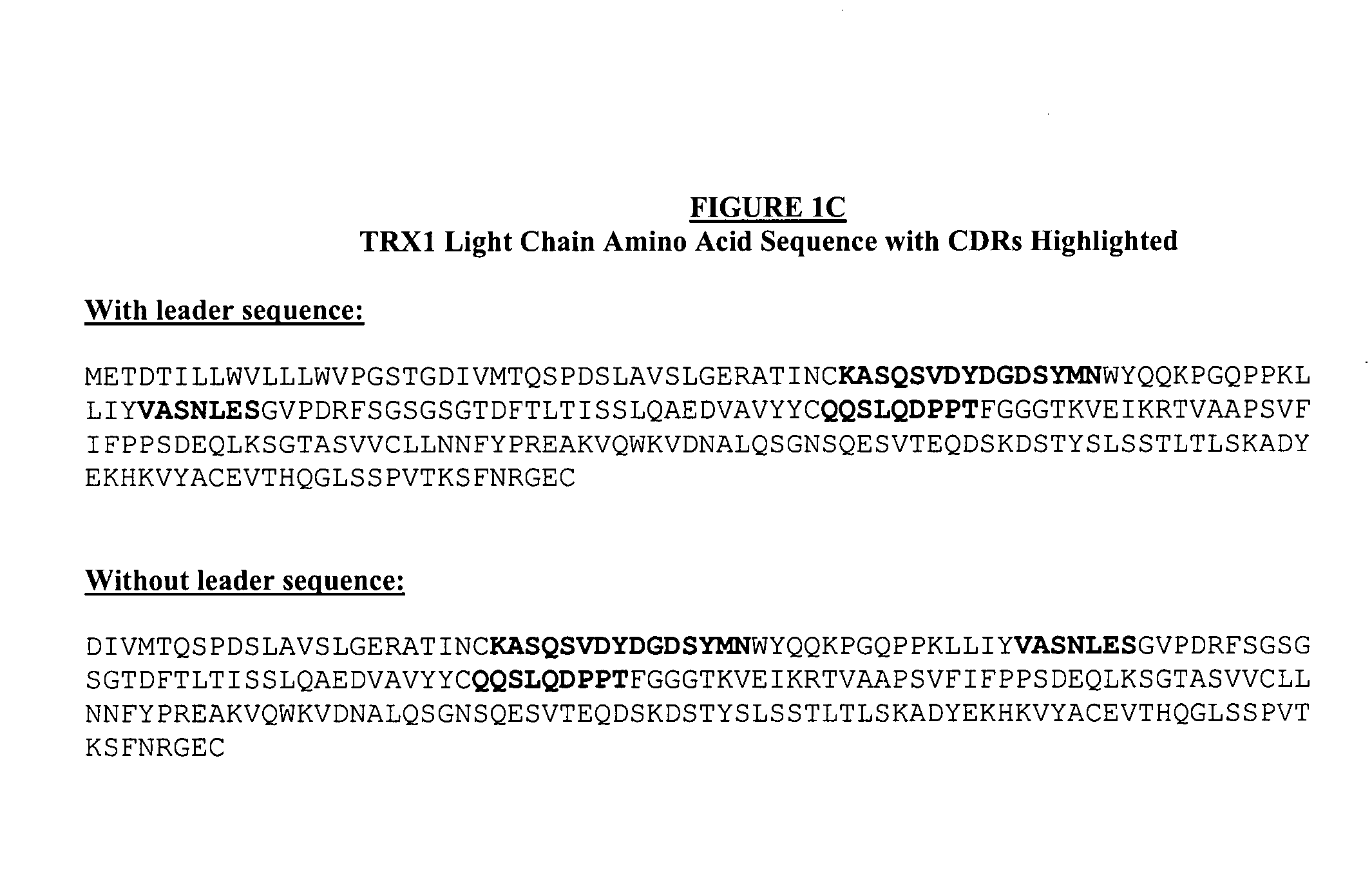Methods of treating lupus using CD4 antibodies
a technology of lupus and antibodies, applied in the field of lupus treatment, can solve the problems of no curative treatment for patients diagnosed, potential harmful side effects for patients being treated, and severe tissue damag
- Summary
- Abstract
- Description
- Claims
- Application Information
AI Technical Summary
Benefits of technology
Problems solved by technology
Method used
Image
Examples
example 1
Treatment of Lupus with Non-Depleting CD4 Antibody, Alone and in Combination
[0237] The following sets forth a series of experiments that demonstrate that a non-depleting CD4 antibody is efficacious in a preclinical model of SLE. Performance of the antibody is compared to that of exemplary standard of care and experimental treatments.
[0238] NZBx W F1 mice exhibit spontaneous lupus-like kidney disease, providing a useful preclinical efficacy model of SLE (see, e.g., Theofilopoulos (1992) “Murine models of systemic lupus erythematosus” in Systemic Lupus Erythematosus, Lahita (ed.) Churchill Livingstone, N.Y., 121-194). FIG. 5 schematically illustrates progression of the disease by age in this model. Symptoms observed include the appearance of ds-DNA antibodies, proteinuria, kidney histopathology, increased blood urea nitrogen (BUN), and increased mortality. Arrows indicate the time points at which treatment with the non-depleting CD4 antibody was initiated in two studies comparing th...
example 2
Treatment of Multiple Sclerosis with Non-Depleting CD4 Antibody
[0266] The following sets forth a series of experiments that demonstrate that a non-depleting CD4 antibody is efficacious in a preclinical model of MS. Performance of the antibody is compared to that of exemplary standards of care and experimental treatments.
[0267] Experimental autoimmune encephalomyelitis (EAE) is an inflammatory condition of the central nervous system (CNS) with similarities to MS; in both diseases, demyelination results in impaired nerve conduction and paralysis. Relapsing and remitting EAE induced by injection of proteolipid protein (PLP) peptide in SJL / J mice provides a useful preclinical efficacy model of MS (see, e.g., Miller and Karpus (1996) “Experimental Autoimmune Encephalomyelitis in the Mouse” in Current Protocols in Immunology, Coligan et al. (eds.), John Wiley & Sons, Inc. and Sobel et al. (1990) “Acute experimental allergic encephalomyelitis in SJL / J mice induced by a synthetic peptide ...
example 3
Treatment of Lupus with CD4 Antibody in Combination with MMF
[0289] The following sets forth a series of experiments that demonstrate that a non-depleting CD4 antibody, alone and in combination with mycophenolate mofetil, is efficacious in a preclinical model of SLE.
[0290] The NZB×W F1 mouse model of SLE was described above in Example 1. In this model, preclinical efficacy of a non-depleting CD4 antibody (YTS177, described above) was compared to that of a non-binding control antibody (described above), mycophenolate mofetil (CellCept® or MMF, a current treatment), and a combination of the CD4 antibody and MMF.
[0291] Treatment of NZB×NZW mice was initiated at 9 months of age. Mice were screened for proteinuria and randomized into groups based on their proteinuria scores. At the onset of the experiment, each treatment group included 15 mice, of which 73% exhibited proteinuria levels of >300 mg / dl. (Note that this is a more severe disease state than that at which treatment was initia...
PUM
| Property | Measurement | Unit |
|---|---|---|
| Mass flow rate | aaaaa | aaaaa |
| Mass flow rate | aaaaa | aaaaa |
| Mass flow rate | aaaaa | aaaaa |
Abstract
Description
Claims
Application Information
 Login to View More
Login to View More - R&D
- Intellectual Property
- Life Sciences
- Materials
- Tech Scout
- Unparalleled Data Quality
- Higher Quality Content
- 60% Fewer Hallucinations
Browse by: Latest US Patents, China's latest patents, Technical Efficacy Thesaurus, Application Domain, Technology Topic, Popular Technical Reports.
© 2025 PatSnap. All rights reserved.Legal|Privacy policy|Modern Slavery Act Transparency Statement|Sitemap|About US| Contact US: help@patsnap.com



